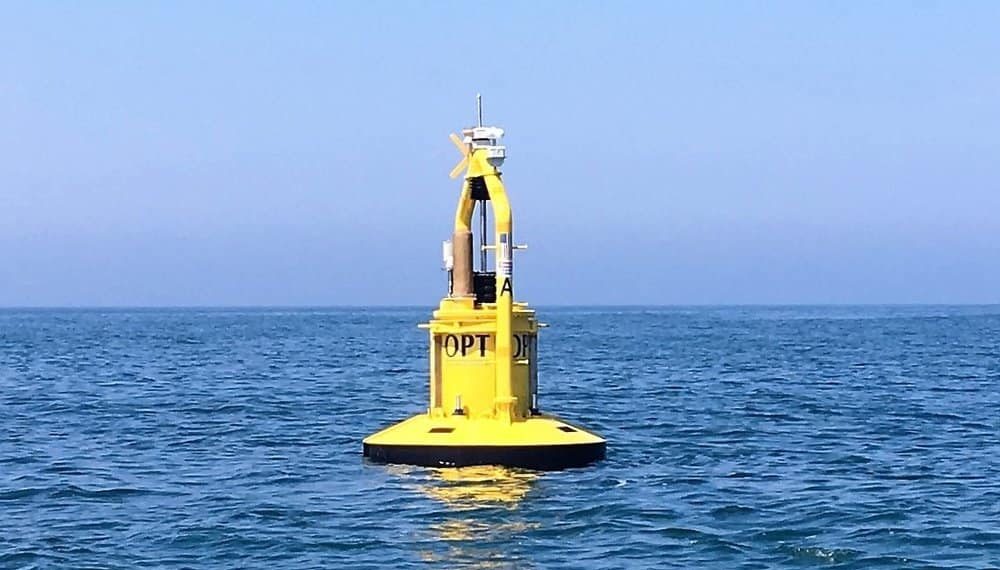Ocean Power Technologies, an ocean energy technology developer, has expanded its offering with the latest product called the hybrid PowerBuoy.
The hybrid PowerBuoy is a buoy that offers remote power for subsea and topside applications, data communications, and a nominal 1.5-megawatt-hours of energy storage.
While OPT is known for its moored floating buoys – such as OPT PB3 PowerBuoy – that harvest and store wave energy, this buoy is a hybrid, meaning it doesn’t necessarily depend on waves to generate power, as it utilizes solar panels and a Stirling backup engine to power topside or subsea payloads.
OPT said that the hybrid Powerbuoy can be used for monitoring, surveillance, subsea charging, and connectivity for offshore industries including oil and gas, science and research, aquaculture, and telecommunications.
“Discussions are underway with prospective launch customers in advance of open water testing of the hybrid PowerBuoy planned for this spring,” OPT said.
“Our team designed this product to meet the offshore power needs expressed by numerous potential customers,” said George Kirby, OPT President and Chief Executive Officer. “The hybrid PowerBuoy provides us with additional flexibility in designing cost-effective power and communications solutions for locations around the world.”
“All of our customers are focused on reducing greenhouse gasses,” Kirby added. “Offering a solution that incorporates primarily solar with propane-fueled backup power further reduces our customers’ carbon footprint. The discussions we’ve been having with customers throughout development have shown real anticipation for the capabilities of the hybrid PowerBuoy.”
The buoy generates power is generated independently of wave activity which the company believes makes it an ideal solution for powering through extreme weather and heavy seas or in calm, low wave environments, including near-shore and inland bodies of water.
“The hybrid PowerBuoy can be utilized across many industries and applications, including emergency and short-term power and communications support for maintenance, testing and repair services. It can be configured with OPT’s marine surveillance solution for security monitoring of offshore areas. Customized solutions are also available, including the addition of subsea sensors to monitor for acoustic signatures, tsunami, and other environmental conditions,” OPT said.
Data from the hybrid PowerBuoy is transmitted to shore-based command stations via communications networks, including WiFi, cellular, mesh and/or satellite systems, depending upon location. Data can also be integrated with satellite, terrestrial, and other data feeds to form a detailed surface and subsea view.
OPT recently put the first hybrid PowerBuoy through an initial sea trial that included several tow configurations, roll and pitch stability measurements, Stirling Engine and solar power source operation and integration, and other tests in coastal New Jersey waters. The company says that the buoy “met or exceeded stringent engineering requirements.”
“We believe that the hybrid PowerBuoy is a remarkable power and communications platform – an easily deployable, clean offshore energy source and an excellent complement to OPT’s PB3 PowerBuoy solutions,” said George H. Kirby, President and Chief Executive Officer of OPT.










































